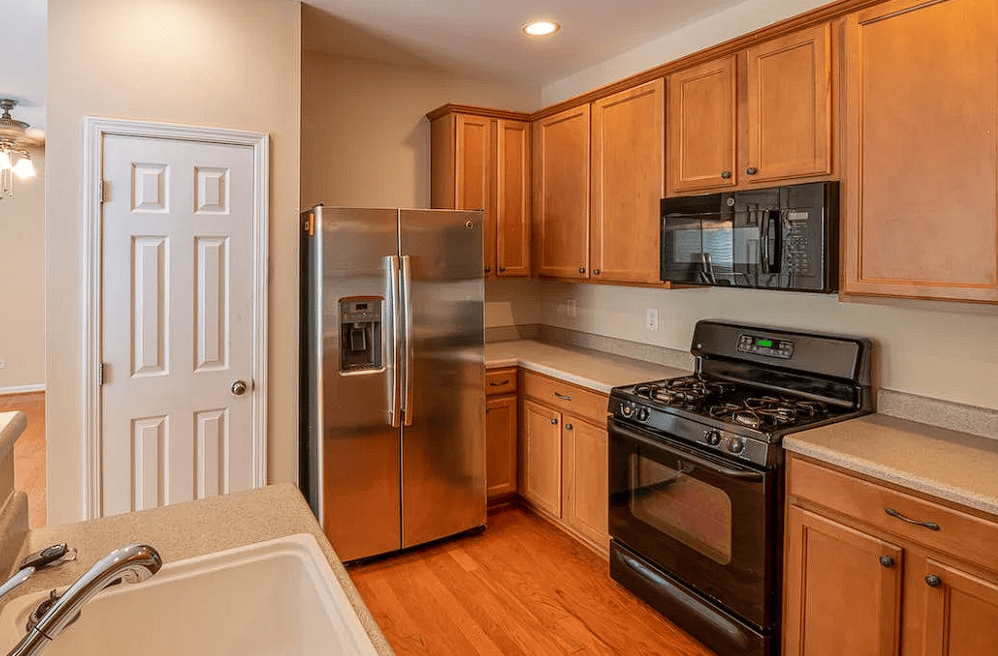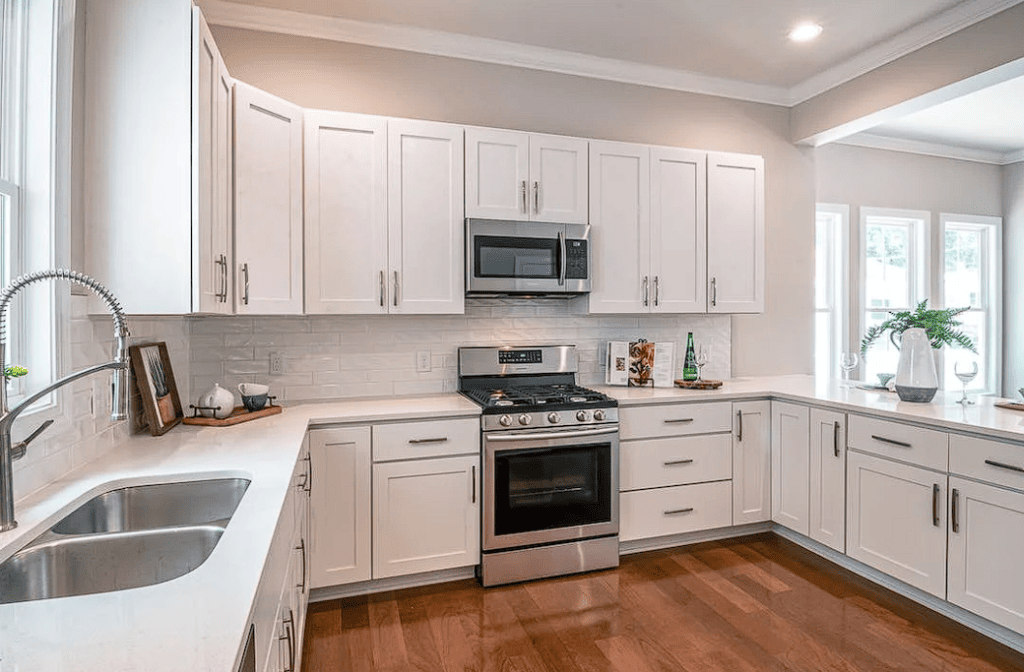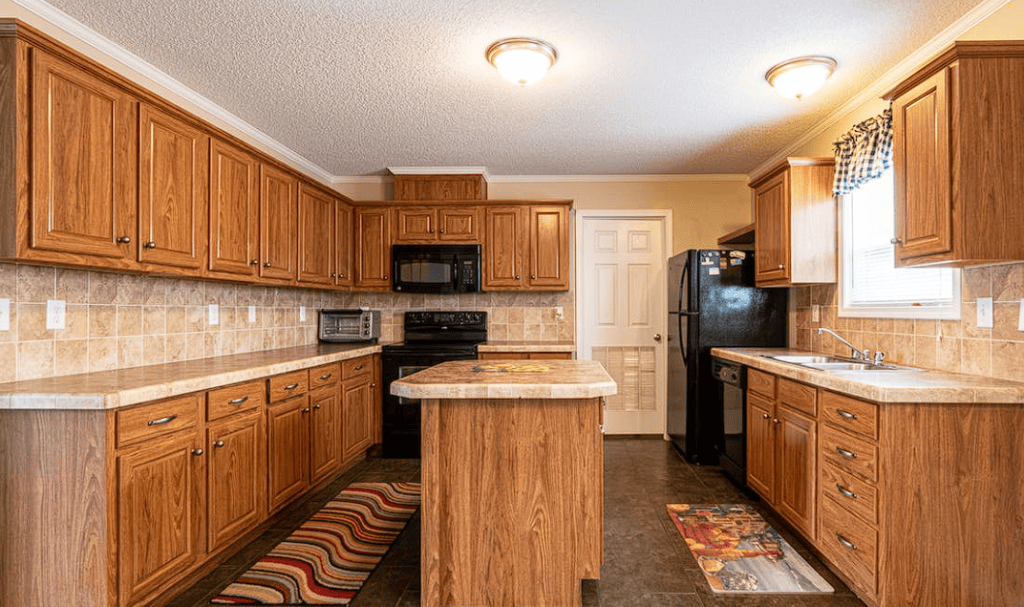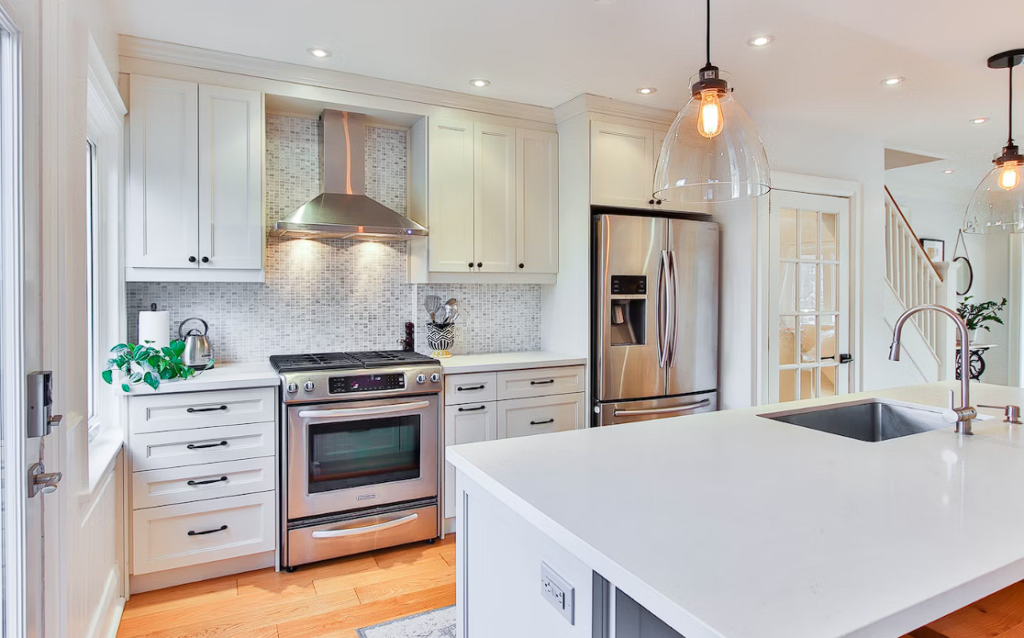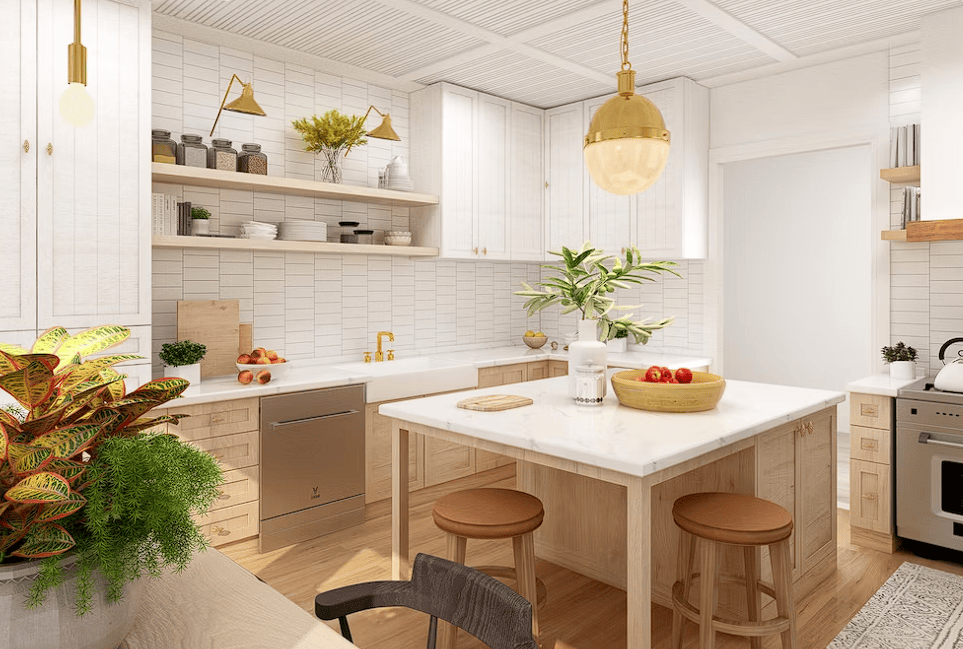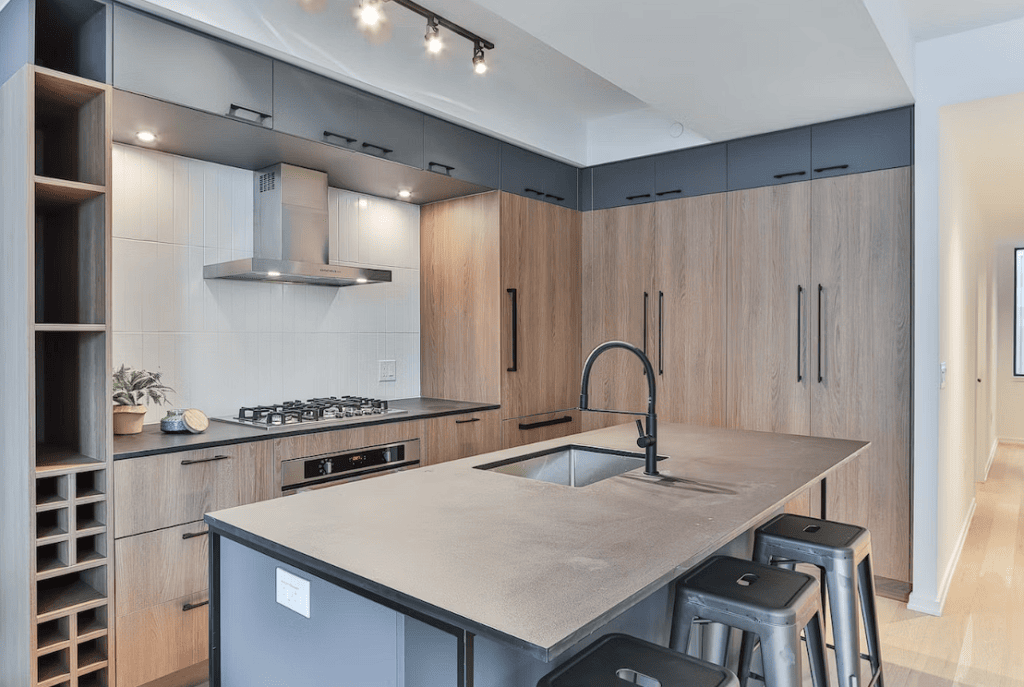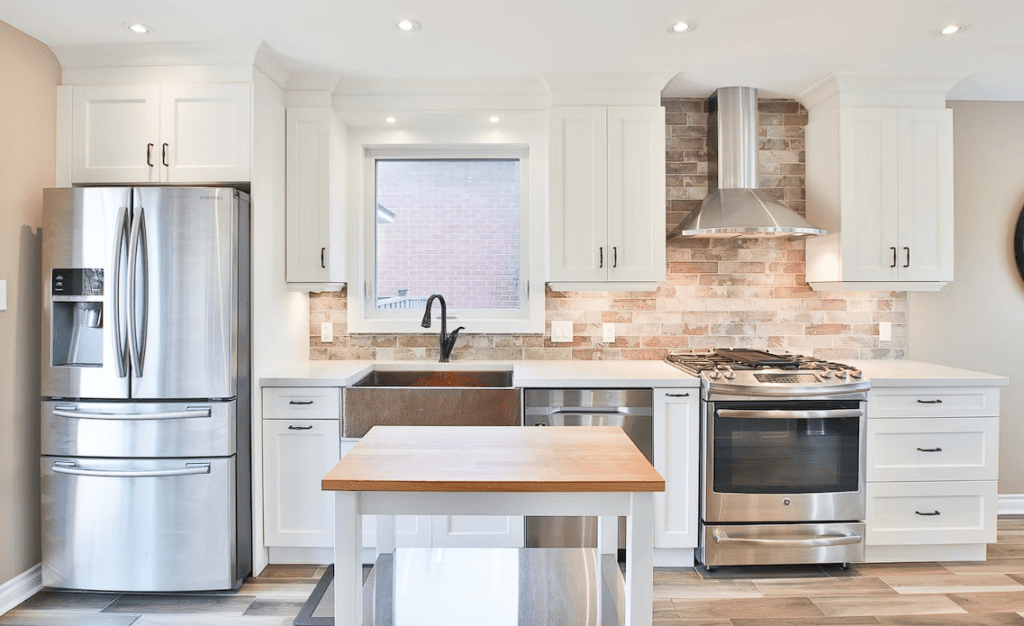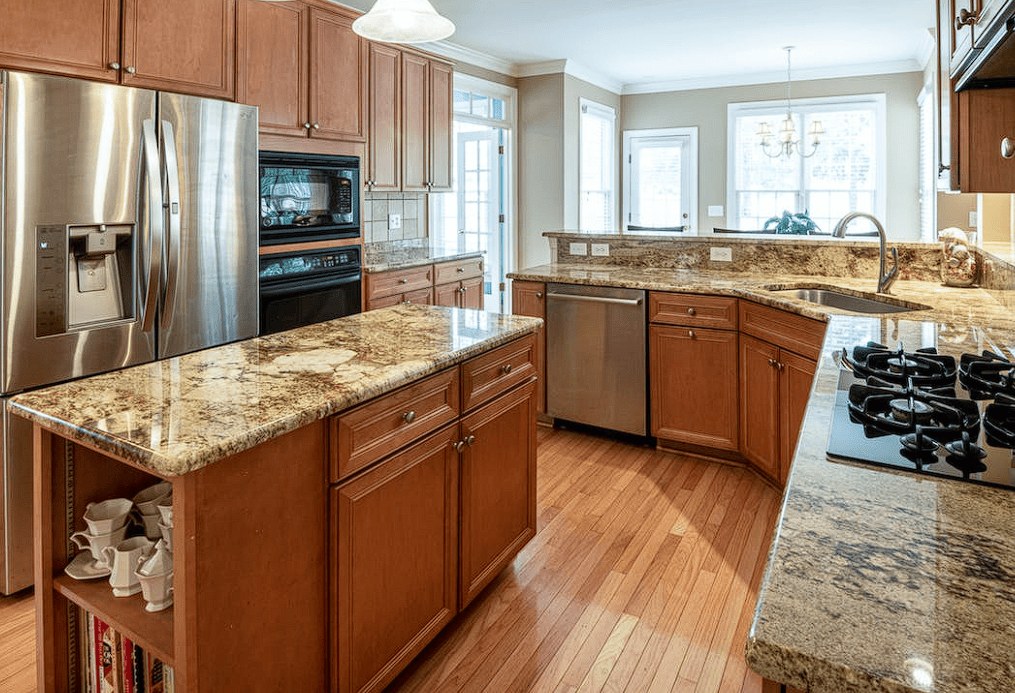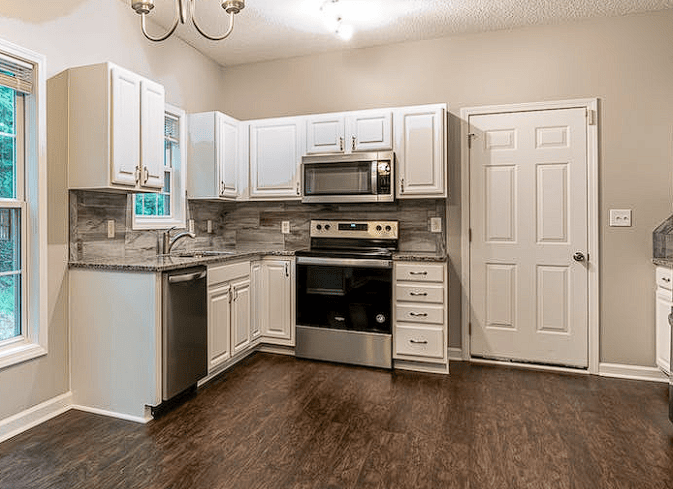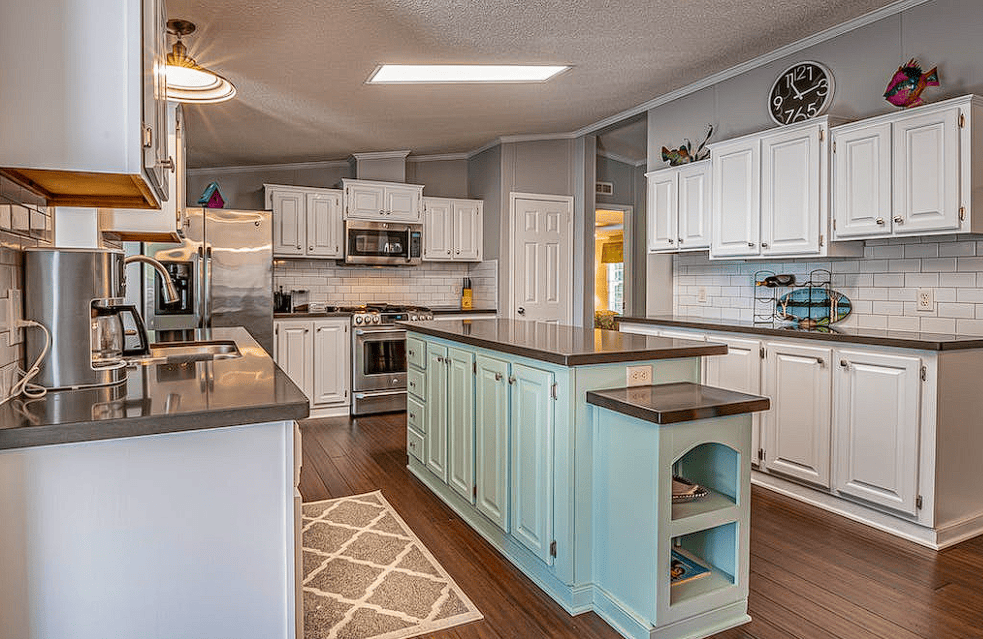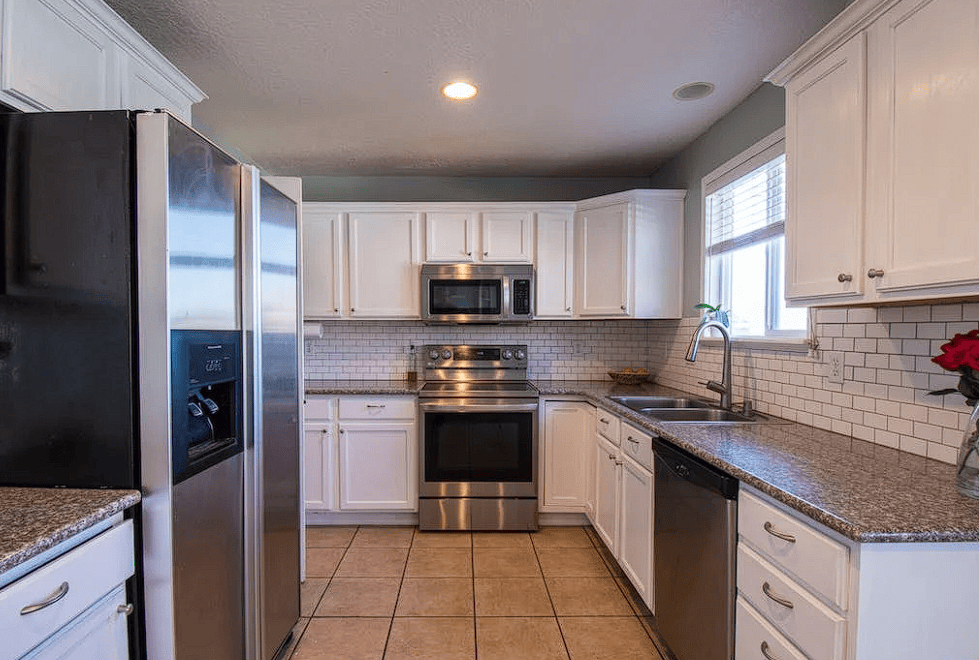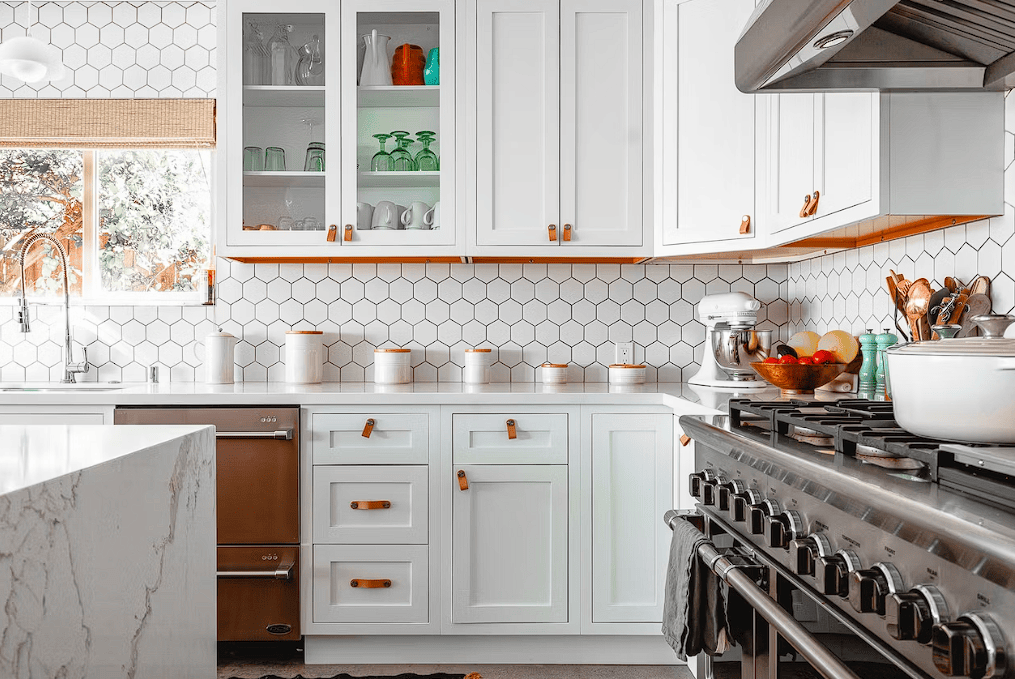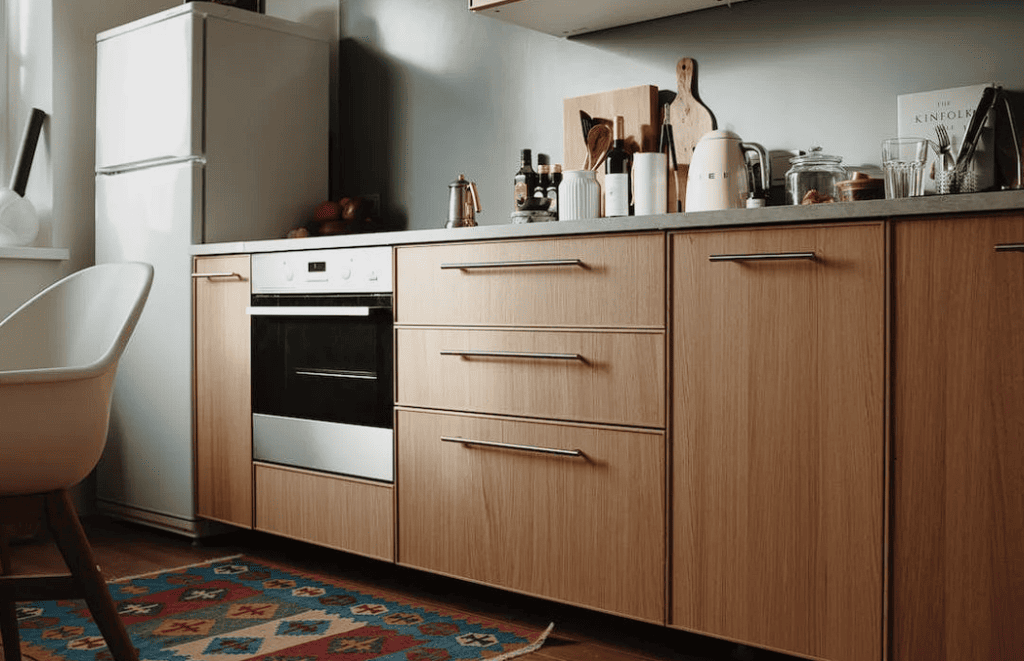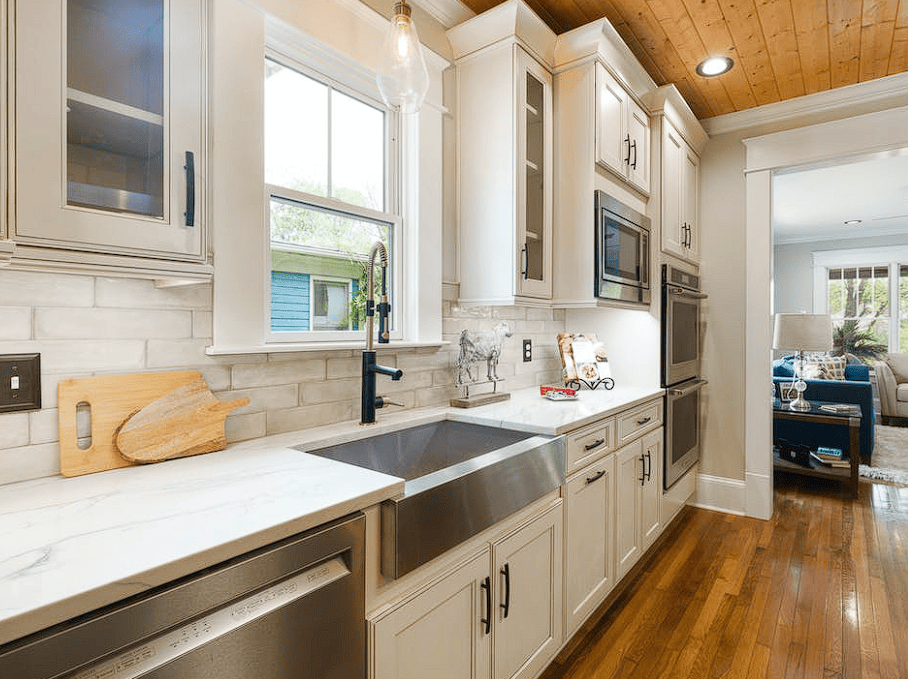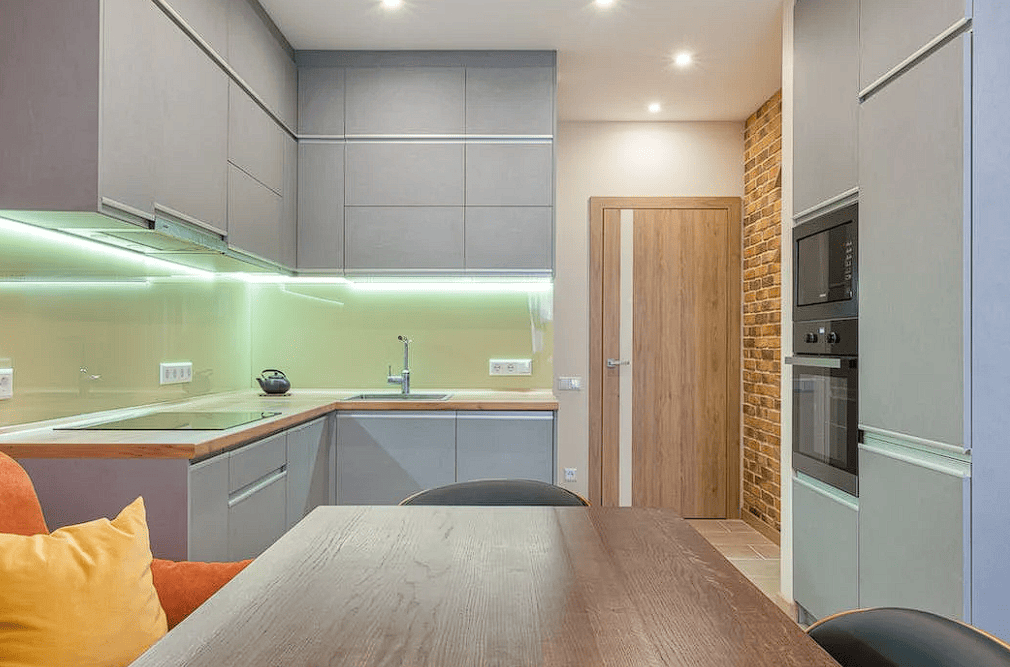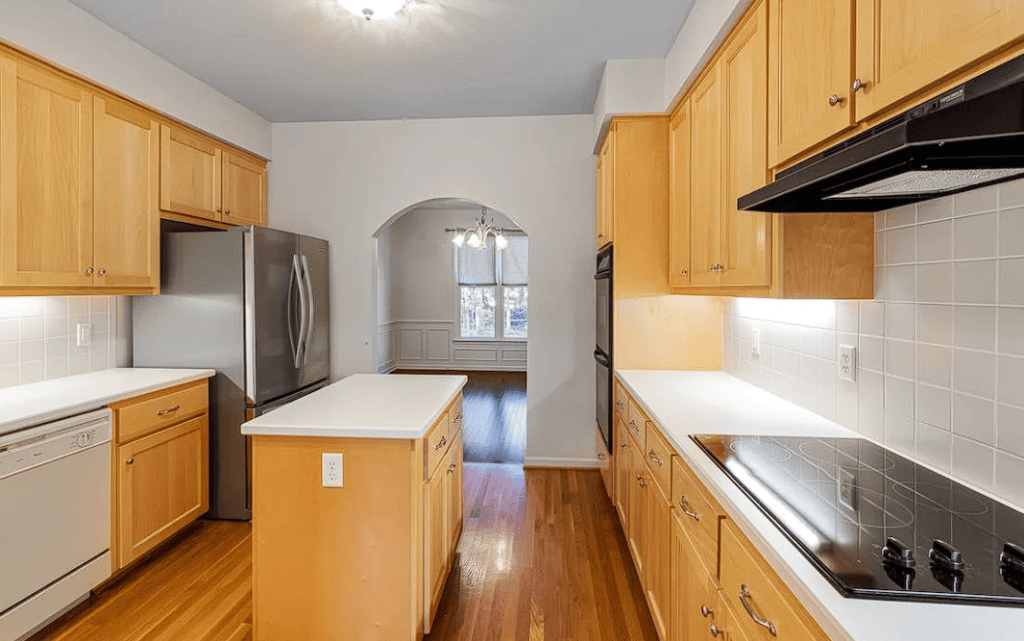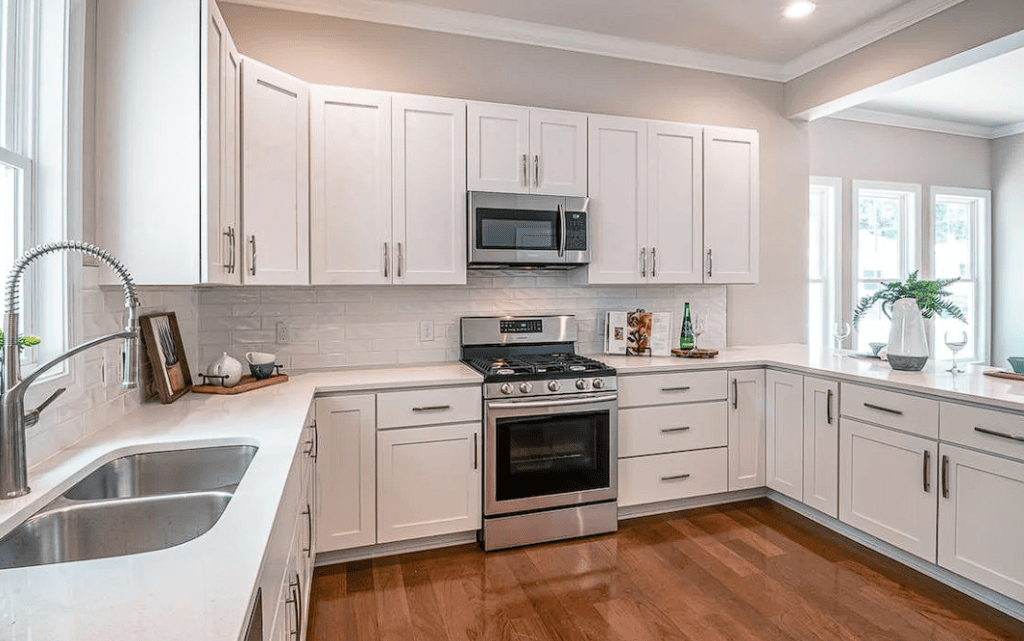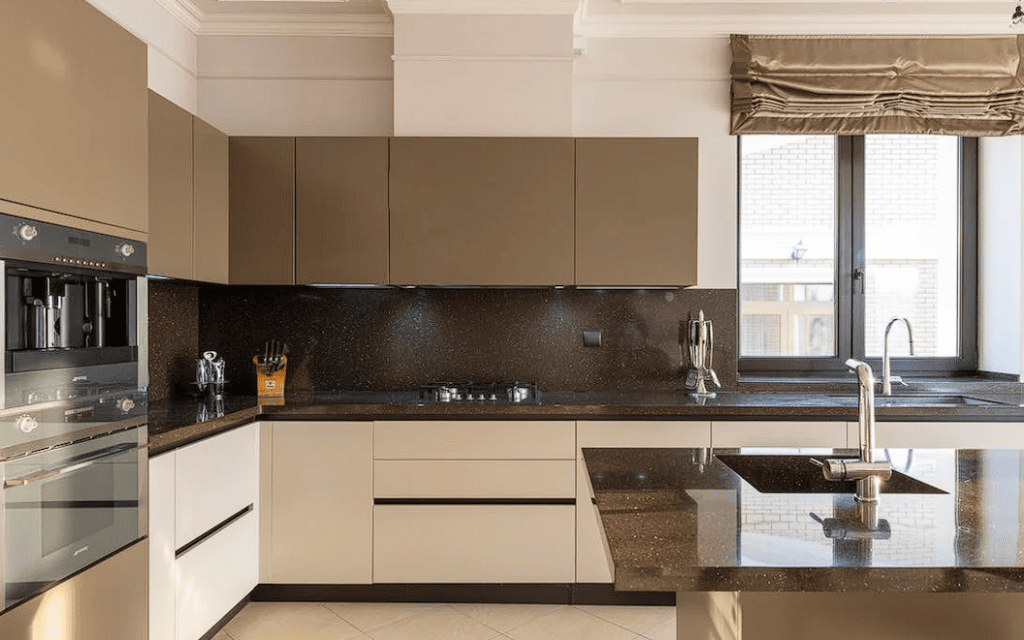Cabinets play a crucial role in the aesthetics and practicality of the kitchen, one of the most important rooms in any house. Kitchen cabinets are an expensive investment, so you should think about how long they will last before replacing them. The variety of cabinet materials and methods of construction makes it difficult to settle on one that will last.
In this article, we'll take a look at the various kitchen cabinet options available and the factors that affect their durability. We will also give you advice on how to prolong the life of your cabinets through proper care and maintenance. This article will help you determine which kitchen cabinets will last the longest and which ones will need to be replaced sooner so that you can make an educated purchase.
What Affects Cabinet Lifespans?
The longevity of a cabinet can be affected by a variety of factors, from the quality of its initial construction to the conditions in which it is placed. The average lifespan of a cabinet can be affected by a number of different variables, some of which are listed below.
Cabinet Material
There is a wide variety of materials from which to construct cabinets, from the flimsy to the practically indestructible. Medium-density fibreboard (MDF) and particleboard are on the cheaper end of the materials spectrum. The lack of solidity in these materials makes them more vulnerable to water damage.
However, materials like solid wood are more resistant to expansion, cracking, and mould growth and stainless steel is likely to outlast nearly everything else in your kitchen.
Moisture Exposure
Moisture and water damage are major problems for kitchen cabinets. Over the course of their useful lives, cabinets located above the range and stove or under the sink are likely to be subjected to numerous splashes of sauce, soapy water, or sprays of steam. These cabinets might not hold up as well to water damage as their bathroom and closet counterparts do.
Frequency of Use
As with the previous point, the durability of kitchen cabinets can degrade much more rapidly than that of other cabinets due to the frequent use they receive. Paint chips, stained or veneer damage, and general wear and tear on hardware are all possible results of frequent cabinet opening and closing. The cabinets may stop closing properly or lose their pristine appearance as a result of this.
Signs You Need a New Cabinet
Water Damage
Water damage can be identified by the presence of symptoms like staining, swelling, and the inability to open or close the cabinets. Get in touch with a professional kitchen remodeler right away before the problem gets worse.
Failure to Function
When your kitchen cabinets stop working properly, it's time to get new ones. Cabinets that are difficult to open, that frequently get stuck, or that make an unusual noise, for instance, should be replaced as soon as possible. When cabinet doors and drawer fronts begin to come loose, that's another sign you need new cabinets.
Mould Growth
Cabinets damaged by mould can be a health hazard as well as an eyesore. Mould can quickly spread from its original location, so it's important to track it down and eliminate it before replacing your cabinets.
Types of Kitchen Cabinets
Kitchen cabinets come in a variety of styles, each with its own set of features and benefits. The following are some of the most common kitchen cabinet types:
Base Cabinets
Most kitchens have at least some base cabinets to store bulky items like pots, pans, and other cooking utensils. The standard size is 24 inches in depth and 34.5 inches in height.
Base cabinets are a room's defining feature because they provide so much-needed storage. The layout of a kitchen is determined by where the base cabinets are placed. These cabinets serve as the anchor for counter space around the room's perimeter, as well as for islands and peninsulas. The bathroom vanity tops or kitchen sinks and countertops can be supported by the solid, heavy-duty construction of these cabinets.
Cabinet carcasses made of solid wood are possible, but MDF or plywood box construction is far more common in modern cabinets; face frames, doors, and drawer fronts are typically made of hardwood. Faces, doors, and drawer fronts in Euro-style cabinets are typically laminated MDF with no face frames.
When a countertop is added to the standard 34 1/2-inch height of kitchen base cabinets, the total height is 36 inches. Available widths range from 12 inches to 42 inches. These standard dimensions allow for almost any kitchen to be fitted with a series of cabinets of varying sizes. For this reason, the standard depths for kitchen base cabinets are 24 inches. The legs of a base cabinet can be seen, or they can be concealed by a toe-kick, a long strip of wood.
The standard depth for a bathroom vanity cabinet is 21 inches, though this can range from 18 to 24 inches, depending on the design.
If you're looking for a bargain on base cabinets, look no further than these standard sizes. Size irregularities may require you to invest in more expensive semi-custom or custom cabinets.
Wall or Upper Cabinets
Upper cabinets, also known as wall cabinets, are placed above lower cabinets to provide additional storage space for items such as plates, glasses, and flatware. Common dimensions are 12 inches in depth and 30 inches in height.
Stock cabinets and metal storage cabinets with locks and doors are also available fully assembled from other retailers. Upper wall cabinets for the garage or the laundry room can be found on Amazon, while Etsy specialises in one-of-a-kind or custom, handmade pieces.
It's important to think about the final installation height when constructing walls or upper cabinets. Upper cabinets should be mounted at the height of 54 inches, with an average distance of 18 inches between the counter and the cabinets above it. The top of the upper cabinets should be 84 or 90 inches from the floor. When constructing the face frame, make sure the bottom rail sticks out 1/16 inch past the base of the cabinets.
While wall or upper cabinets are a common storage solution, it's important to give some thought to the space you have available and the layout of your home or garage before installing them.
Tall Cabinets
Brooms, mops, and other bulky cleaning implements are kept in the upper cabinets. They have a standard height of 84 inches and a depth of between 12 and 24 inches.
Having sufficient storage space in the kitchen is essential. It's easy for a kitchen to become cluttered with items like dishes, glasses, and cooking utensils. If you're running out of storage space in your current cabinets, you might want to think about upgrading to taller cabinets.
Whether you call them tall kitchen cabinets, pantry cabinets, or utility cabinets, these floor-to-ceiling storage units have room for everything you need in the kitchen. You can choose from many different designs, materials, and configurations to find the perfect one for you.
Specialty Units
The kitchen is the soul of the home, the place where delicious meals are lovingly prepared. It's where the family gathers for meals and friendly gatherings. That's why it's so important to make your kitchen as efficient and attractive as possible. Specialty Units kitchen cabinets are one of the most important ways to improve the look and functionality of your kitchen.
Kitchens with Specialty Units cabinets are perfect if you have unusual or specific storage requirements. They're available in a wide range of configurations, from various sizes to a variety of surface treatments.
How Long Should Kitchen Cabinets Last?
Although the aforementioned variables make it difficult to pinpoint an exact lifespan for your cabinet, they can help narrow down the possible outcomes. Because of their vulnerability to moisture, plywood and MDF cabinets, for instance, may only last ten years in a kitchen. However, due to the high quality of the material, solid hardwood cabinets can last for up to twenty-five years with little maintenance.
In addition, the cabinets in a vacation home that aren't used for most of the year are likely to last much longer than the cabinets in a year-round residence. The cabinets under a kitchen sink that has a dishwasher may have a longer lifespan than those in a kitchen where the dishes are washed by hand every night, and the cabinets in a humid area will need to be replaced sooner than those in a dry area.
Considering all the factors we've discussed, the average lifespan of your cabinets could be anywhere from 15 to 45 years. But how can one determine when that moment has arrived?
What is Cabinet Refacing vs Cabinet Painting?
If you want to give your kitchen a facelift without breaking the bank, consider refacing or painting your cabinets. While both approaches will save you money, they are not equivalent in terms of time and effort required, cost, durability, or whether or not you can do the work yourself.
When renovating cabinets, the doors and/or drawer fronts are swapped out for new ones. In cabinet refacing, the old finish is removed and replaced with a new veneer of wood or another solid sheet. The framework of the cabinets will stay the same, but the hinges and drawers could be swapped out.
Painting cabinets entails applying a coat of paint to the exposed surface of the cabinet door or drawer front. The framework of the cabinets will stay the same, but the hinges and drawers could be swapped out.
The pros to cabinet refacing:
- Quicker because you aren't doing the work
- Your cabinets appear to have new doors and drawer fronts because a fresh veneer is used to create that illusion.
- Covers wood grain easily
- Changing cabinet hardware is simple
- Getting a smooth finish is simple.
- There may be some water damage to the cabinet doors and drawer fronts. For as long as the bases are sound.
The cons to cabinet refacing:
- This won't change how your kitchen is set up, and there's a cheaper way to do it.
- For the best results, you need to hire a pro.
- You won't get new cabinet doors from this.
Conclusion
The key points of this article are the explanations of what influences the durability of kitchen cabinets and how to care for and maintain them for as long as possible. Among these are the materials used, the environment in which it was built, the amount of moisture it is exposed to, and the frequency with which it is used. Stainless steel is expected to outlast just about everything else in the kitchen, while materials like solid wood are more resistant to expansion, cracking, and mould growth. Kitchen cabinets are particularly vulnerable to damage from water and humidity, and they also wear out quickly from being opened and closed so often. The indicators of water damage, the failure to operate, the growth of mould, and the many types of kitchen cabinets are the most crucial information presented here.
Wall cabinets, often called upper cabinets, are installed above base cabinets to accommodate a greater quantity of tableware and cutlery. Mount upper cabinets at a height of 54 inches, leaving a space of about 18 inches between the counter and the uppermost cabinets. You may find tall cabinets in a wide variety of styles, materials, and layouts, and they will go from the floor to the ceiling, providing ample space for all of your kitchenware. Kitchen cabinets from Speciality Units are a great way to update your space. They come in a wide variety of sizes and shapes, and can have a number of different finishes.
Cabinets in a kitchen can last anywhere from 15 to 45 years on average, depending on their construction, where they are installed, and other variables. Kitchens can be given a new look without breaking the bank by resurfacing the cabinets and painting the walls. Painting entails covering the exposed surface of the cabinet door or drawer front with paint, whereas refacing involves replacing the existing finish with a new veneer of wood or another solid sheet. Refacing's benefits include a streamlined process, a new veneer, and a polished appearance. The disadvantages include keeping the current kitchen layout, not having new cabinet doors, and not employing a professional.
Content Summary
- Cabinets play a crucial role in the aesthetics and practicality of the kitchen, one of the most important rooms in any house.
- Kitchen cabinets are an expensive investment, so you should think about how long they will last before replacing them.
- The variety of cabinet materials and methods of construction makes it difficult to settle on one that will last.
- This article will help you determine which kitchen cabinets will last the longest and which ones will need to be replaced sooner so that you can make an educated purchase.
- The longevity of a cabinet can be affected by a variety of factors, from the quality of its initial construction to the conditions in which it is placed.
- The average lifespan of a cabinet can be affected by a number of different variables, some of which are listed below.
- Moisture and water damage are major problems for kitchen cabinets.
- Water damage can be identified by the presence of symptoms like staining, swelling, and the inability to open or close the cabinets.
- Get in touch with a professional kitchen remodeler right away before the problem gets worse.
- When your kitchen cabinets stop working properly, it's time to get new ones.
- When cabinet doors and drawer fronts begin to come loose, that's another sign you need new cabinets.
- Cabinets damaged by mould can be a health hazard as well as an eyesore.
- Most kitchens have at least some base cabinets to store bulky items like pots, pans, and other cooking utensils.
- The layout of a kitchen is determined by where the base cabinets are placed.
- It's important to think about the final installation height when constructing walls or upper cabinets.
- The top of the upper cabinets should be 84 or 90 inches from the floor.
- While wall or upper cabinets are a common storage solution, it's important to give some thought to the space you have available and the layout of your home or garage before installing them.
- Having sufficient storage space in the kitchen is essential.
- If you're running out of storage space in your current cabinets, you might want to think about upgrading to taller cabinets.
- Specialty Units kitchen cabinets are one of the most important ways to improve the look and functionality of your kitchen.
- Kitchens with Specialty Units cabinets are perfect if you have unusual or specific storage requirements.
- Considering all the factors we've discussed, the average lifespan of your cabinets could be anywhere from 15 to 45 years.
- If you want to give your kitchen a facelift without breaking the bank, consider refacing or painting your cabinets.
- Painting cabinets entails applying a coat of paint to the exposed surface of the cabinet door or drawer front.
- Your cabinets appear to have new doors and drawer fronts because a fresh veneer is used to create that illusion.
- This won't change how your kitchen is set up, and there's a cheaper way to do it.
- For the best results, you need to hire a pro.
Frequently Asked Questions
The most durable kitchen cabinets are ones made from solid hardwood. Cherry and maple are popular choices. They're the most expensive but they last a long time and look great doing it. Plywood and MDF (medium-density fiberboard) are less expensive choices.
Steer clear of finishes that show fingerprints and water spots like stainless steel or chrome. They're also harder to clean. Oil-rubbed bronze, satin bronze, brushed or polished nickel and white hardware are all much easier to maintain. Choose the finish that matches your style and kitchen design.
Most expensive cabinetry products are made by experienced artisans with great craftsmanship in cabinet making. Even with the available manufacturing equipment and technology, most cabinet designs are made with hours of hands-on work so expect that you're also paying for their labor and expertise.
If your goal is to update the look of your existing cabinets, the cheapest route is to simply reface them. This process involves either stripping the stain or paint from the existing cabinets and adding new stain, varnish or paint; in some cases, you might even want to refinish the cabinets with a stick-on veneer.
Depending on the size of your kitchen, the kitchen installation timeline may vary by a few hours to an additional day or two from the average 5 to 14-day installation timeframe. Smaller kitchens may only take 1–2 days to replace kitchen cabinets, whereas larger spaces can take up to 14 days or more.




